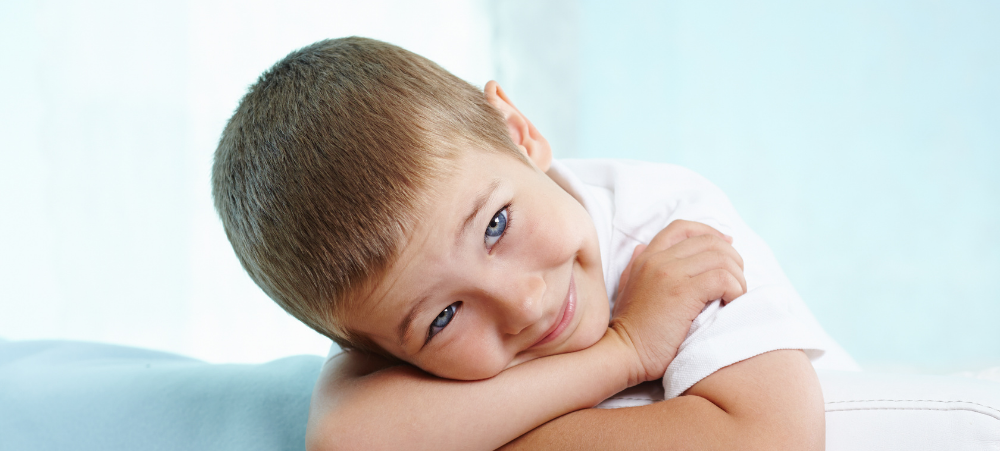According to Affinity Health, awareness of cancer in children is crucial. Between 800 and 1000 South African children are diagnosed with cancer each year.
Sadly, childhood cancer survival rates in South Africa remain low. That is in comparison to international statistics. Many cases are detected too late when cancer has already reached an advanced stage. That reduces the likelihood of successful treatment.
Did you know? September was International Childhood Cancer Awareness Month! In this light, Affinity Health is raising awareness about childhood cancers.
What are the Childhood Cancer Survival Rates in SA?
Many childhood cancers are treatable. High success rates range from 70% to 80% in countries with ample resources. In contrast, approximately 80% of children with cancer in Africa die. That is because they live without access to adequate care.
Although South Africa has an established oncology healthcare service, the infrastructure is overburdened. Cancer knowledge in primary healthcare services is low. There are widespread service delivery issues.
The overall South African survival rate for childhood cancer is 52.1%.
Childhood Versus Adult Cancer
Cancer can attack any body part and affects people of all ages. It begins with a genetic mutation in a single cell. That subsequently multiplies into a mass (or tumour) that spreads throughout the body. It is fatal if left untreated.
In contrast to adult cancer, most malignancies in children have no identified cause. Many studies have attempted to determine the causes of juvenile cancer. But only minimal cases signal environmental or lifestyle issues.
“There is a significant difference between paediatric malignancies and adult cancers. That is due to children being prone to growth spurts within a short period. Thus, cancer grows quicker and more aggressively.
Treatment or guidance may be effective for adults. But it may not be effective for children,” says Murray Hewlett, CEO of Affinity Health. Hewlett is also a director of many for-profit and non-profit organisations.
“Most childhood cancers occur in growing cells. That includes bone marrow, blood, kidneys, and nervous system.”
The five most prevalent childhood malignancies in South Africa from 2009 to 2013 were:
Other types of childhood cancer are uncommon, but they occur occasionally. Children may rarely get cancers such as:
- Rhabdomyosarcoma
- Retinoblastoma
- Bone cancer (including osteosarcoma and Ewing sarcoma)
What are the Top Five Cancers in Children?
Leukaemia
Leukaemia is a cancer of the blood and bone marrow and is the most prevalent type of childhood cancer. It accounts for around 28% of all childhood malignancies. Acute Lymphocytic Leukaemia (ALL) and Acute Myeloid Leukaemia (AML) are the most prevalent forms among children.
Learn More: Why Children Get Leukaemia
Symptoms associated with ALL and AML include:
- Bone and joint pain
- Fatigue
- Weakness
- Pale complexion
- Unexplainable bleeding or bruising
- Fever
- Rapid weight loss
Both ALL and AML can progress rapidly. Thus, they must be treated (usually with chemotherapy) upon diagnosis.
Brain and Spinal Cord Malignancies
Brain and spinal cord tumours account for around 26% of all juvenile malignancies. That makes them the second most prevalent malignancy in children. There are many forms of brain and spinal cord tumours, and therapy and prognosis vary for each.
The majority of childhood brain cancers begin in the cerebellum and brain stem. They may cause:
- Headaches
- Nausea
- Vomiting
- Blurred
- Double vision
- Vertigo
- Seizures
- Difficulty walking
Tumours of the spinal cord are less prevalent than brain tumours in children and adults.
Neuroblastoma
Neuroblastoma begins in early types of nerve cells. These are in an embryo or foetus that is developing. Neuroblastomas constitute roughly 6% of childhood malignancies. This malignancy is in newborns and young children. It is uncommon in youngsters above the age of 10.
The tumour can begin anywhere. But it typically starts in the abdomen, where it causes swelling. Additionally, it can cause symptoms such as bone pain and fever.
Wilms’ Tumour
Wilms’ tumour (also known as nephroblastoma) is a type of kidney cancer. It is most prevalent in children between three and four years old. It is uncommon in older children and adults. It can manifest as a bulge or lump in the abdomen.
Occasionally, a child may exhibit other symptoms, such as:
- Fever
- Discomfort
- Nausea
- Poor appetite
Wilms’ tumour makes up around 5% of childhood malignancies.
Lymphomas
Lymphomas start in the following regions:
- Immune system cells called lymphocytes
- Lymph nodes
- Lymph tissues, such as the tonsils or thymus
- Bone marrow
- Other organs
Depending on where cancer originates, symptoms may include:
- Weight loss
- Fever
- Night / Day sweats
- Exhaustion
- Lumps beneath the skin in the neck, armpit, or groin area
Hodgkin lymphoma (also known as Hodgkin’s disease) and non-Hodgkin lymphoma are the two primary kinds of lymphoma. Both forms are in both children and adults.
Hodgkin lymphoma represents around 3% of childhood malignancies. But it is more prevalent in early adulthood (often in the 20s) and late adulthood (after age 55). Hodgkin lymphoma is uncommon in children under five years old.
Non-Hodgkin lymphoma accounts for around 6% of childhood malignancies.
It is more common in children under the age of three. These tumours frequently progress rapidly in children and need intensive treatment. But they also tend to react better to treatment than most adult non-Hodgkin lymphomas.
Introducing Affinity Junior
Early cancer detection is critical, particularly in the case of childhood cancers. So, Affinity Junior provides affordable healthcare for your children with cost-effective health coverage.
The unique feature of the Affinity Junior plan is that the policy covers only your children. For more information on Affinity Junior, click here.
Learn More: Top 10 Cancer Myths Debunked
We understand that there are many aspects that encompass a Mother, Father or Child and strive toward providing resources and services that accommodates this.
Our content is aimed to inform and educate families on issues starting from pregnancy through to the challenges of the teen-age years.
- Tips for Breastfeeding in Public: Confidence and Comfort - November 20, 2025
- Eskort launches Kiddos: South Africa’s first pork range made just for kids - November 13, 2025
- Putting the Power of Learning in Learners’ Hands During Global Education Week - November 12, 2025





